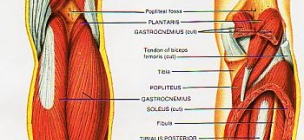Lower Leg Anatomy
Jan 03, 2020 19:45

Overview
While there are many muscles located in the lower leg, three are most well know. Using a professional service will teach you the leg muscle anatomy further, which also provides quizzes and videos. The muscles that make up the calf - the gastrocnemius and soleus - are the most power muscles of the lower leg. The anterior tibialis is on the front lower leg (related to shin splints). The achilles tendon is located in the lower leg.
Bones and Joints
The Lower Leg is comprised of two long bones. The tibia is the larger of the two, and is located toward the middle of the lower leg (medially). The fibula is the smaller bone and it is located on the outside of the lower leg (laterally).
Muscles
The lower leg is divided into four compartments that contain the various muscles of the lower leg.
The anterior compartment
(the front of the shin) holds the tibilais anterior, the extensor digitorum longus, the extensor hallucus longus and the peroneus tertius muscles. These muscles dorsiflex the foot and toes (pull the foot and toes upward). The tibialis anterior also assists turning the foot inward. To feel these muscles contract, place your hand just to the outside of the tibia and pull the foot up.
The lateral compartment
is along the outside of the lower leg. It contains the peroneus longus and peroneus brevis muscles. These muscles pull the foot outward. They also help with plantarflexion (pointing the foot). To feel these muscles contract, place your hand on the outside of your shin and turn your foot out.
The posterior compartment
holds the large muscles that are most commonly know as the calf muscles (the gastrocnemius and soleus). It also contains plantaris muscle. The gastrocnemius is shorter, thicker and has two attachments (inner and outer). It is the most visible of the calf muscles. The soleus lies underneath. These three muscles attach to the achilles tendon. They all aid with plantarflexion.
The deep posterior compartment
is deep within the back of the lower leg. They are the tibialis posterior, flexor digitorum longus, and flexor hallucus longus. Tibialis posterior pulls the foot inward, flexor digitorum longus flexes the toes, and flexor hallucus longus flexes the big toe. All three aide in plantarflexion.











































